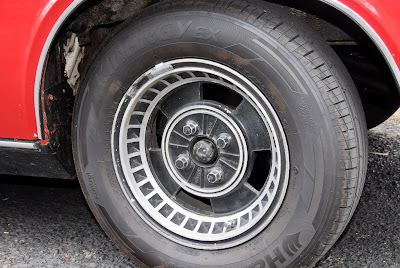Featured Cars # 1: Jack Regis' Jensen Healey (With Bonus Video!)
There are some parallels between the demise of the "Big" Austin Healeys - the 3000 being the last of that line - their replacement by the Jensen Healey, and the transition that saw Fiat's production of the X1/9 end in 1982, only to be continued by Bertone.
When the Donald Healey Motoring Corporation's relationship with the British Motor Corporation ended, the former enlisted the assistance of Jensen - who manufactured the magnificent Big Healey bodies - to create a new sports car, the Jensen Healey.
In the case of the X1/9, Bertone designed the car and built the bodies in their own factory before sending them to Fiat for assembly and finishing, and then took over full production of the model, dropping the Fiat designation and marketing them under their own name until 1989.
The storyline does differ, however, in that even though the Jensen Healey filled the void left by the cessation of Austin Healey production, and Jensen continued to build their bodies, the new car was a complete departure from those produced in collaboration with BMC.
It's not only the more contemporary body style that sets the J-Hs apart from their A-H predecessors, though; the Jensen collaboration is powered by what was then a highly advanced 16 valve twin-cam Lotus motor of just under 2 litres' capacity, feeding its four cylinders through twin Dell'orto side-draught carbies.
This is a stark contrast to the very robust, powerful, yet quite low-tech BMC-sourced Austin six cylinder engines that were fitted to the Big Healeys.
Today's feature car really stands out in the local scene as Jensen Healeys aren't particularly prevalent in Tasmania.
It also makes a fabulous sound, quite different to the also very sexy six-cylinder note of its A-H predecessors, as you can hear for yourself:
(I confess to not being of Petrolicious-standard quite yet!)
This isn't surprising, though; the same source (https://en.wikipedia.org/wiki/Jensen-Healey) suggests that the J-H was marketed to fit in between the TR6 and Jaguar E-Type.
Jack describes his car as a "work in progress," which he happily admits is a fair summation of his entire not insubstantial car collection.
It's very straight, rust-free and mechanically spot-on, but I'm sure he won't mind me saying that it's not a concours d'elegance example, being in fairly regular use and driven as it was intended to be.
And that, in my opinion, is how sports and classic cars are best enjoyed!
U M P H
(uppermiddlepetrolhead.blogspot.com.au.)
Nikon DSLR images / iPhone video.









Comments
Post a Comment